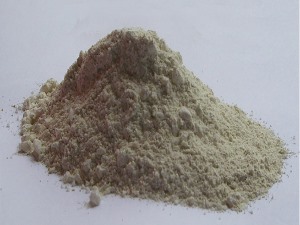What are the aspects of chemical corrosion of ramming materials in intermediate frequency furnaces
The intermediate frequency furnace ramming material is a cost-effective dry vibrating material, which is composed of super-grade bauxite clinker, corundum, spinel, magnesia, sintering agent, etc. It is suitable for carbon steel, alloy steel, stainless steel and high manganese steel. The smelting of the medium frequency furnace has high life span and high cost performance. The chemical corrosion of the ramming material in the intermediate frequency furnace mainly has the following aspects.
(1) Corrosion of molten iron. The furnace lining is mainly corroded by carbon in molten iron. SiO2 plus 2C—Si plus 2CO corrodes and smelts gray cast iron, both in ductile iron, and more serious in smelting ductile iron.
(2) Slag intrusion. CaO, SiO2, MnO, etc. in scrap iron and steel are easy to form low-melting slag, especially CaO is more harmful. Therefore, attention should be paid to the cleanliness of the materials used, and the amount of slag generated by severely oxidized thin-walled waste is more. , It should be used as little as possible or in batches, and less added to each furnace.
(3) Refractory slag. The high melting point slag is composed of aluminum in the quality, which reacts with the SiO2 in the furnace lining to form mullite (3A12O3-2SiO2) with a melting point of 1850 degrees Celsius, so it is necessary to remove the aluminum in the quality. , to avoid the formation of high melting point slag.
(4) Auxiliary agent. If slag coagulant or slag flux is used in the smelting operation, it will aggravate the corrosion of the furnace lining, so it should be avoided as much as possible.
(5) Carbon accumulation. The carbon accumulation is on the ice face of the furnace lining, and even accumulates in the heat insulation layer. The reason for the carbon accumulation is that oil-impregnated wastes, such as chips, are used in the initial stage of furnace reuse, because the furnace lining is not full. During sintering, CO infiltrates into the back of the furnace lining, and the reaction of 2CO-2C plus O2 occurs. The generated carbon accumulates in the ice face of the furnace lining or in the pores of the thermal insulation material. When carbon accumulation occurs, it will cause the furnace body to ground leakage, and even the coil will catch fire. flower.

Related News
- Introduction of construction method of ramming material in intermediate frequency furnace
- How to choose the material of furnace lining
- The difference between rammer and castable
- Application direction of intermediate frequency furnace refining
- Introduction to the construction method of dry ramming material
- Do you know the production process and control points of breathable bricks?
- The application of argon blowing technology at the bottom of the intermediate frequency furnace
- Method for prolonging service life of intermediate frequency furnace lining
- In addition to diffused breathable bricks, there are those types of breathable bricks
- What are the advantages of coil cement
- There are many steps in the whole process of ramming material in the intermediate frequency furnace
- The service life of the ramming material of the intermediate frequency furnace
- Introduction to the Design of Orientation of Anode Furnace Breathable Brick Device
- The effect of using ramming material
- What are the advantages of ramming material compared with castable material?
- Differences between rammer and castable
- Introduction to the construction method of ramming material
- How to choose the type of intermediate frequency furnace ramming material?
- Classification of intermediate frequency furnace charges
- What are the types of intermediate frequency furnace lining materials?


